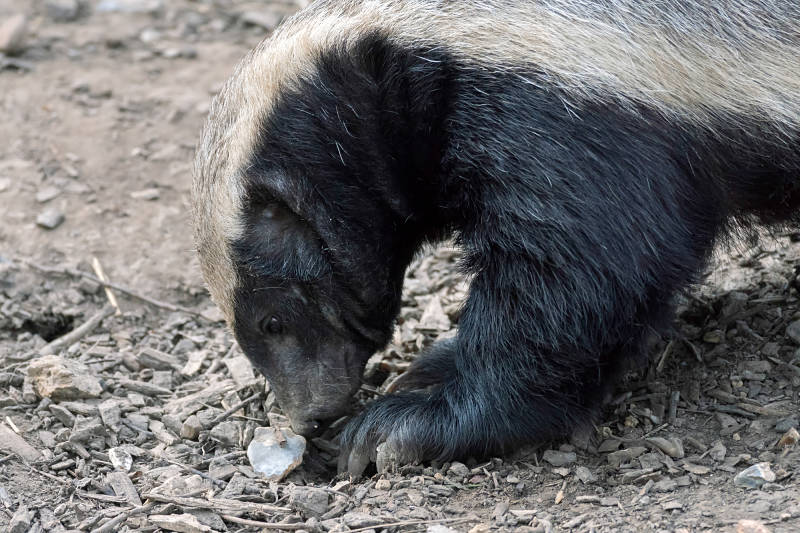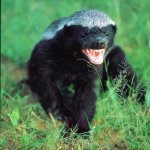Honey Badger Facts
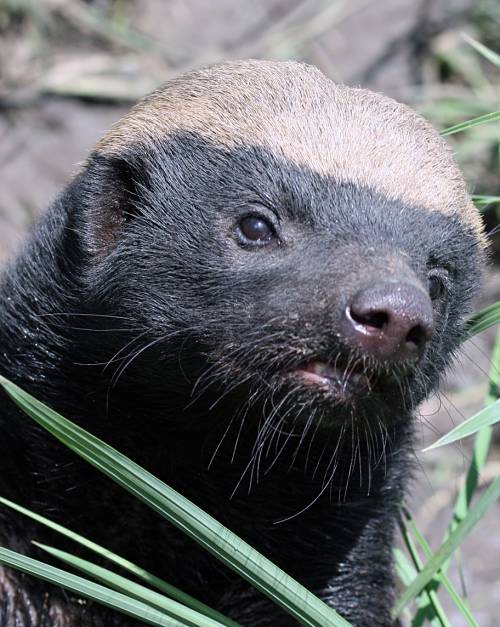 Portrait of a Honey Badger
Portrait of a Honey BadgerOne of the coolest honey badger facts is that they are known to kill cobras.
The honey badger is not a true badger.
The honey badger is in a separate genus from the American and European badgers, and is actually more closely related to wolverines and weasels.
Nevertheless, the honey badger is exceedingly "badger-like", and has a reputation for being one of the most fearless and relentless animals on Earth.
Honey badgers are native to most of Africa and parts of Southwest Asia.
In Africa it is commonly called the "ratel".
This word has the same meaning as the word "rattle", and refers to the sound that these excitable animals make when they are agitated, which is actually quite often.
The honey badger is a relatively small animal averaging about 25 pounds, with large males occasionally reaching 35 pounds.
They are long-bodied with short, powerful legs, standing about 12 inches at the shoulder.
Honey badgers are solitary animals that spend a great deal of time actively, noisily, patrolling large territories in search of almost anything edible.
They are mostly carnivorous hunters, but will try a variety of foods including fruits and even some flower species.
They scavenge for carrion but also actively hunt and eat a large variety of prey, including birds, reptiles and even young monkeys, but are especially fond of honey, of course.
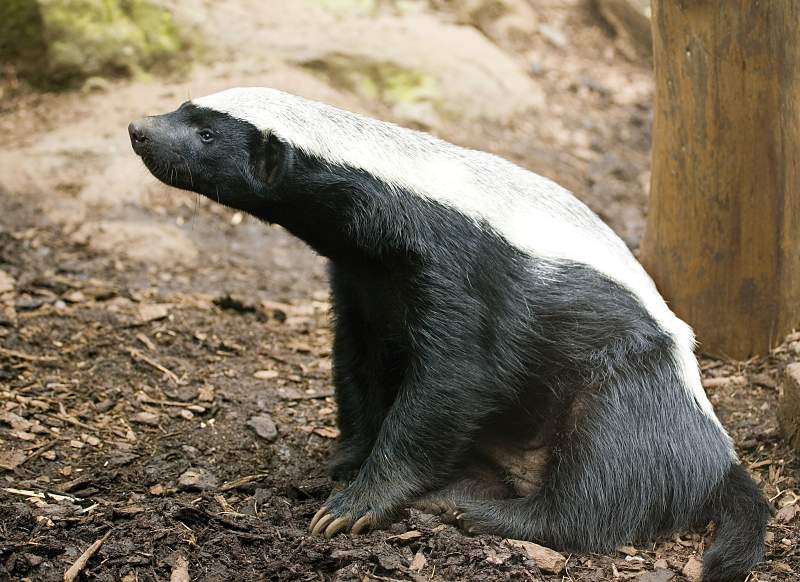
They will seek out and attack honey bee hives with incredible determination, accepting hundreds of stings while they eat honey, honey comb and their favorite, the bee larvae which is located at the center of the hive.
Honey badgers are not only able to accept stings from bees, but can also handle bites from the worlds deadliest snakes, like puff adders, mambas and cobras, which they happily hunt, kill and devour.
The honey badger is not necessarily immune to these venoms, but rather the badgers skin is so thick and tough that most bee stingers and snake fangs cannot penetrate it.
If the venom of a large snake does get into the system, the badger may be killed, but often just has a coma-like "down time" while it recovers.
This may be a few moments or as long as several hours, after which the badger will awake and promptly it finish off its snake dinner.- Amazing!
The honey badger has a high metabolism and spends lots of energy crashing around its territory looking for things to consume.
There is very little stealth involved here.
They risk alerting prey, but also risk aggravating predators such as lions, leopards and hyenas, all of which are considerably larger than the 20 to 35 pound honey badger, and they don't seem to care.
They can, occasionally, be killed by these animals, but these predators don't usually take the risk involved in subduing an animals as formidable as the honey badger.
The badger will generally bluff, growl and charge it's way out of the situation, even warding off entire prides of lions, which is why the honey badger is commonly considered the fiercest animal on the planet. - Honey Badger Facts
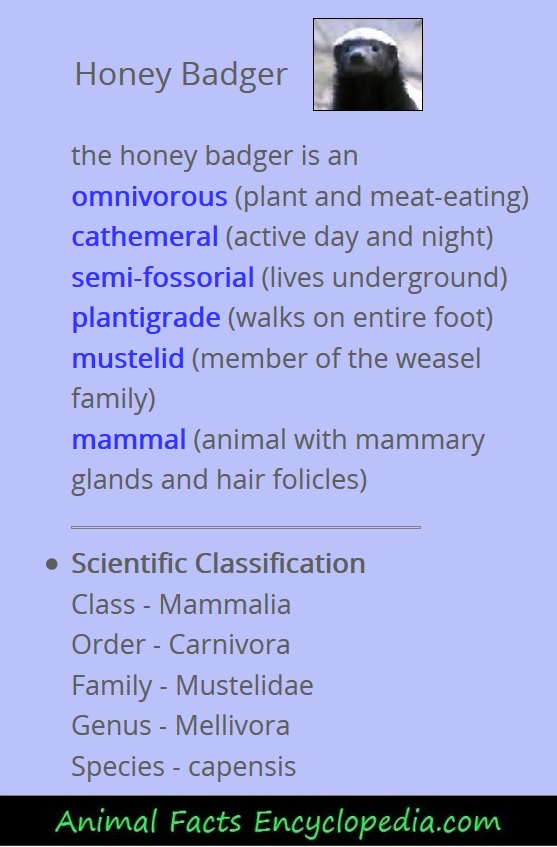
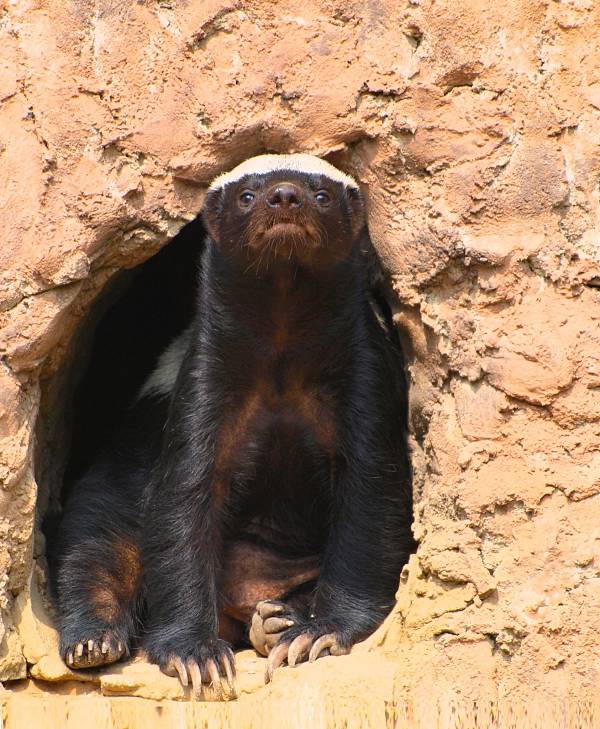

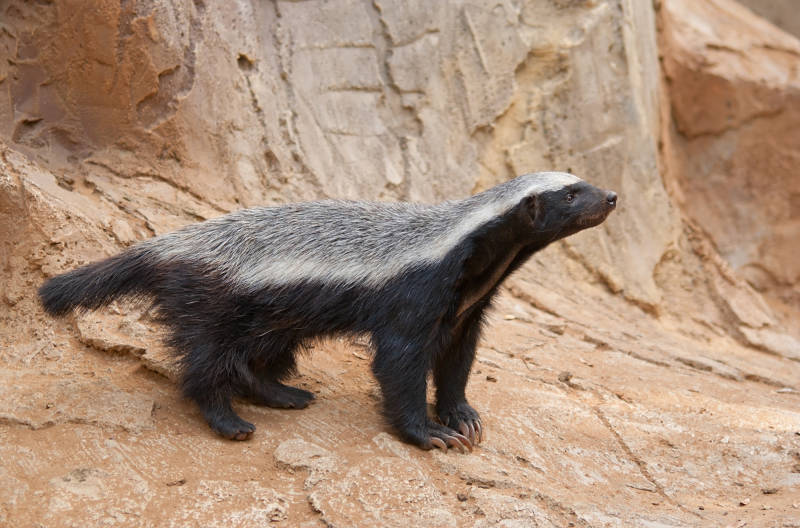
a few more Honey Badger facts
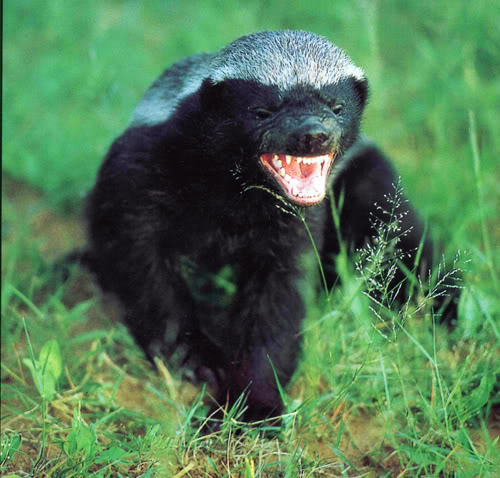
- The honey badger has such tough skin that most stingers, and many fangs can't penetrate
- The honey badger is widely recognized as the most fearless- and fiercest - animal in the world.
- The honey badger can survive a bite from a King cobra, and then eat the snake.
- The word "badger" comes from the French word "becheur" which means "digger"
- Honey badgers are active day and night and are always hunting
see more animal extreme closeups
Recent Articles
-
African Animals - Animal Facts Encyclopedia
Oct 11, 16 10:27 PM
African Animals facts photos and videos..Africa is a wonderland for animal lovers, and a schoolroom for anyone who wants to learn about nature, beauty and the rhythm of life -
Baboon Facts - Animal Facts Encyclopedia
Oct 11, 16 10:26 PM
Baboon facts, photos, videos and information - Baboons are very distinctive looking monkeys with long, dog-like snouts and close set eyes. -
Great Apes Facts - Animal Facts Encyclopedia
Oct 11, 16 10:25 PM
Great apes facts, photos and videos..Human beings did not evolve from chimpanzees, modern chimps and gorillas do not appear in the fossil records until much more recently than homo sapiens..




















